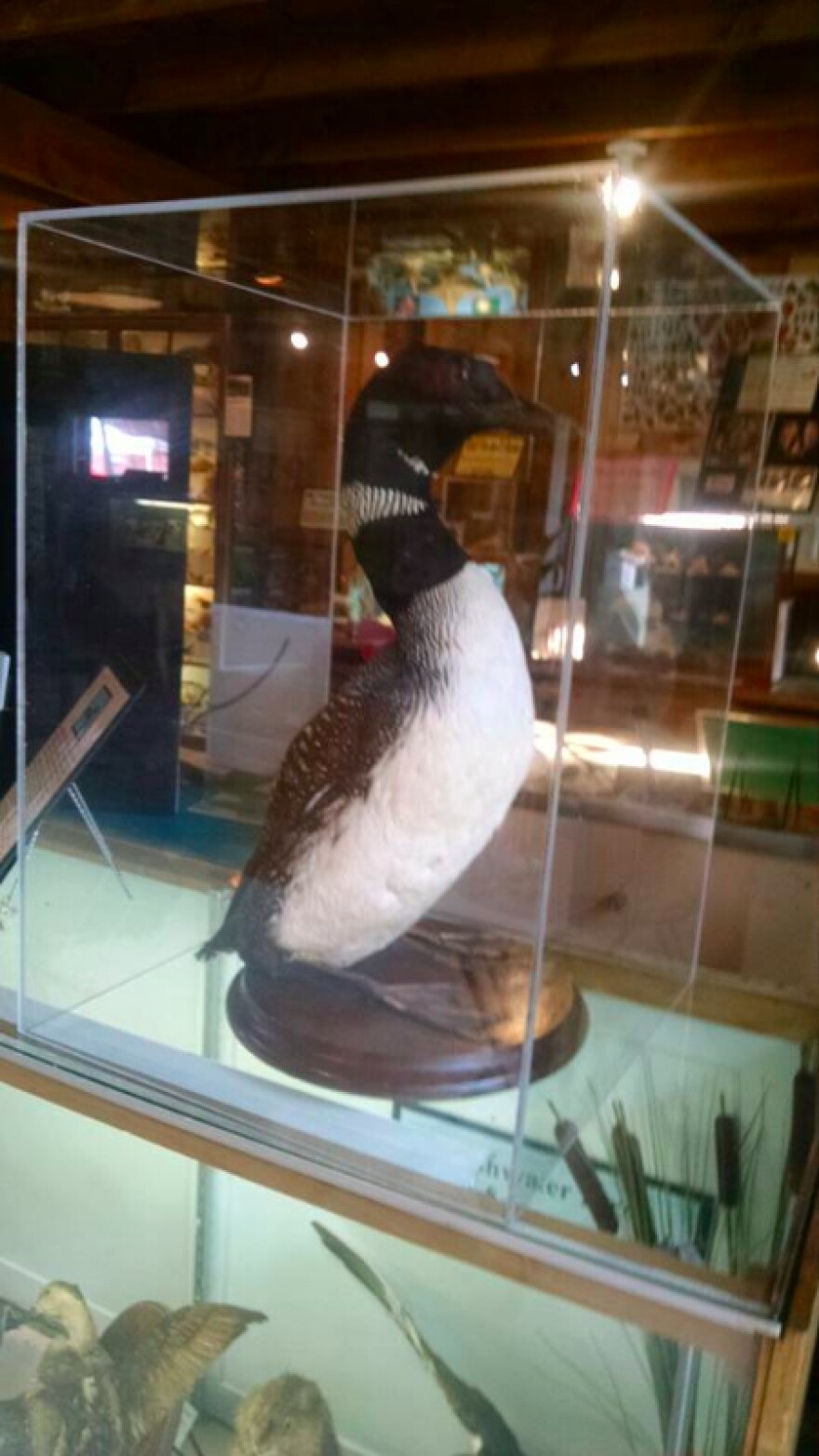The problem with most nature museums is that they’re too neat.
Everything is carefully labeled and preserved, enclosed in glass cases or behind various barriers. It’s all very nice and scientific, but it’s not what nature is like. Nature is messy.
The ground changes colors and textures, from rocks to flowers to grass. Clouds and fish come in all kinds of shapes, as do animals, vegetables, and fruits. It’s almost like a very creative, very powerful artist made all these things, and then threw it all up into the air and let it lay wherever it landed, waiting to be discovered.
The Little Nature Museum in Warner aims to embody that had that same kind of creative, unpredictable energy.

The museum was started by Sandra Waddell in her bedroom when she was just 12-years-old back in 1955. Today, she's Sandra Wadell Martin, is a 76-year-old retired New Hampshire junior high school science teacher.
And she’s still the nonprofit museum’s director and president, in charge of a collection that’s grown to more than a thousand items over the last 62 years.
Martin grew up in Winthrop, Massachusetts with parents who encouraged her intellectual curiosity. When they learned of a special summer science program for sixth-graders at the Boston Museum of Science, Martin and several of her neighborhood friends were quickly enrolled.
“Nobody was teaching science then. Not until at least the ninth grade,” she recalls. “They didn’t have any programs available, not anything to do with the environment or things like that at that time. Going to the Museum of Science was the only way I was going to get any science.”
That experience made an impact.
“The teachers were magnificent,” Martin says, still enthusiastic more than 60 years later. “Because they didn’t have to worry about grades or marks or any of those things.”
In the program, Martin was introduced to basic concepts of biology, botany and anatomy. By the end of the summer, she was hooked.

Not long afterwards, she started her at-home museum, opening it up to the public. According to a story published in the old Boston Traveler newspaper in 1959, Martin soon started teaching two different age groups of youngsters about the natural world.
“It’s something I just can’t help,” she says of her instructional inclination. “I think that I teach, whether I’m actually teaching or not.”
When her collection grew too large, Martin moved it to her basement. Then, when she began teaching at Hampton Academy Junior High in New Hampshire, it was located in the school.

The museum later moved into her Durham home for three years and, in 1968, to Weare, where it was available for public viewing for more than 30 years. (Martin eventually went on to earn a masters degree in botany at the University of New Hampshire.)
After Martin moved to Hopkinton, the Little Nature Museum was based at a local farm, but when the property was sold, she began working on a capital campaign aimed at finding a more permanent home for the facility.
She raised more than $60,000 and moved the collection to its current 2,200-square foot space in a converted barn on the same grounds as the popular Mt. Kearsarge Indian Museum.

Through it all, the Little Nature Museum has maintained the same relaxed, hands-on, learn-at-your-own-pace vibe it had when Martin began in her bedroom. That’s partly because the collection – especially its rocks, minerals and fossils – have a different “pedigree” than what’s found in most natural museum.
“If these were at Harvard University, they’d use them for research and study, collecting data and things like that,” Martin explains. “But just about everything here has been given to us, almost like from the man-on-the-street. Someone in Florida sees an interesting rock or some sand or whatever and they give it to us. ‘Isn’t this interesting?’ they say… And, we keep it.”
That decreases its scientific value, but it increases the accessibility of the collection, she explains. Many of the displays have items that can be picked up, felt and examined. It makes the experience especially memorable for children.
“It’s a very interactive museum. It’s not just looking at things and reading about them,” the director notes.
For instance, when you enter the museum, Martin – or one of her enthusiastic volunteers – are happy to show you around, or let you take a self-guided tour.
Near the door, you’ll see a small sign that explains the difference between animal antlers and horns. Then you can look over the beautiful stuffed fox and bear cub as you read a short explanation about how “Animals Prepare for Winter.”
Nearby you’ll see various bird nests as well as some mounted birds, including New Hampshire’s iconic loon.
If Martin is close by, she’ll happily explain how the 1918 Migratory Bird Act forbids collecting certain bird feathers – none of which are among those on display, and that you are welcome to pick up and try to guess what kind of bird they come from.

Nearby, there’s an enclosed area where you can don protective eyewear as your tour guide draws a darkening curtain, then turns on a black light that illuminates fossilized minerals with a phosphorescent glow.
Younger kids will enjoy sticking their fingers into the dollhouse-like “masked” structure, and trying to identify natural items by touch only. And they can feel different kinds of sand, and watch tiny samples take on an artistic bent when viewed through a micro-viewer.
As you stroll around, you can learn about the economics of local insects, see illustrations of “dazzle camouflage” that was used on some World War I ships, learn how to draw bats and view samples of the various types of poison ivy found in the area.
“I’ve never seen anything like this in any other museum,” Martin says of the later, emphasizing its practicality.
The hands-on approach continues outside the museum on the adjacent 2.5-mile Medicine Woods Trail. The museum provides a “Woods’ Wonders” nature pack so adults can help little kids explore and make natural discoveries.
And there are special programs on wild edibles, staying safe in the woods and becoming a “nature ninja.”
Martin can’t help but wonder at times about the future of the Little Nature Museum, but for now she’s content to simply spread her love of nature to adults and children. It just comes natural to her.
On Sunday, September 24, the Little Nature Museum will join the Mt. Kearsarge Indian Museum for a special Harvest Moon and NatureFest event that includes numerous interactive exhibits, live animal presentations, guided nature walks, games and food. The general admission price – $10 for people over 12, $5 for child and seniors and $30 for families – also includes admission to both museums. Click here for more information.
Ray Carbone is a freelance writer who lives in Warner. You can reach him at raycarbone@yahoo.com







